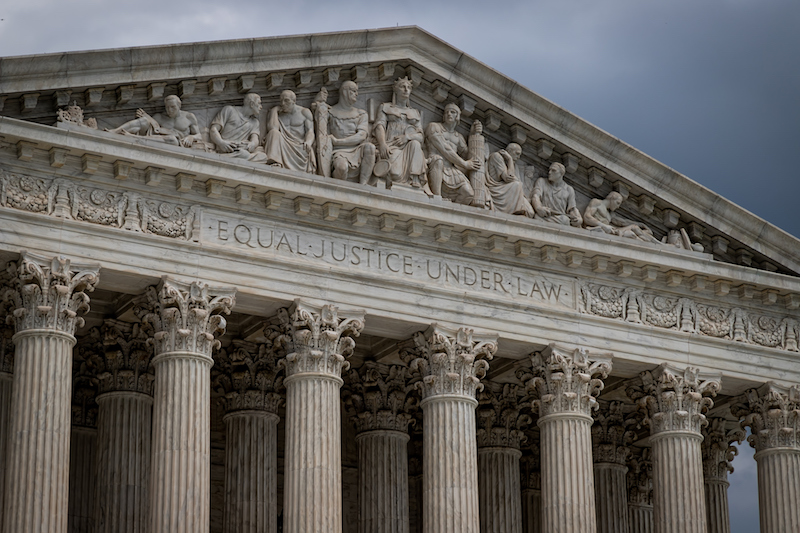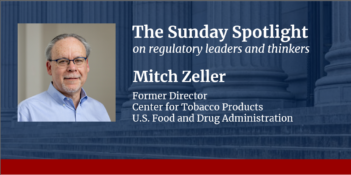
In his D.C. Circuit cases, Judge Kavanaugh tends to disfavor most agency interpretations of statutes.
Last October, Judge Brett Kavanaugh told the Heritage Foundation that statutory interpretation ideally “should be neutral, impartial, and predictable among judges of different partisan backgrounds and ideological predilections.” But he acknowledged that this is not the reality today. The Chevron doctrine that reviewing courts should defer to reasonable agency interpretations of ambiguous statutory terms is too malleable, according to Judge Kavanaugh. If judges like what agencies have done, they can find a statutory ambiguity that justifies judicial deference. If not, they can declare that the agency’s underlying statutory authority unambiguously bars the agency’s action.
Yet this perceptive insight on Chevron comes from a judge who rarely defers to agency action. Judge Kavanaugh acknowledges that “no definitive guide exists for determining whether statutory language is clear or ambiguous.” He candidly admits, “I tend to be a judge who finds clarity more readily than some of my colleagues.”
Judge Kavanaugh describes his “solution” to the lack of a “definitive guide” as follows: Courts would continue deferring to agency interpretations of “statutes using broad and open-ended terms,” such as “‘reasonable,’ ‘appropriate,’ ‘feasible,’ or ‘practicable;’” however, for more specific statutory terms, courts would themselves decide if “the agency’s interpretation is the best reading of the statutory text.”
A careful review of Judge Kavanaugh’s opinions indicates that he has not been deferential to agencies even when applying statutes with “broad and open-ended terms.”
In his dissent in White Stallion Energy Center v. EPA, Judge Kavanaugh interpreted the word “appropriate” in the Clean Air Act to require the U.S. Environmental Protection Agency to balance costs and benefits before even deciding to regulate a source of a hazardous air pollutant. Judge Kavanaugh described this as “just common sense and sound government practice”—even though the agency, when developing the regulation, found that the benefits greatly exceeded the costs. Surprisingly, the U.S. Supreme Court, in a sharply divided 5-4 decision, subsequently embraced Judge Kavanaugh’s interpretation.
When interpreting a more specific statutory provision in the Clean Water Act authorizing EPA to revoke a disposal permit if it “will have an unacceptable adverse affect” on water resources and wildlife, Judge Kavanaugh again insisted that the agency erred by failing to balance costs and benefits. Dissenting in Mingo Logan Coal v. EPA, Judge Kavanaugh declared that “absent a congressional directive to disregard costs, common administrative practice and common sense require an agency to consider the costs and benefits of its proposed actions, and to reasonably decide and explain whether the benefits outweigh the costs.” The other judges disagreed, noting that the company had not even raised the issue in the proceedings below.
Even when an agency did balance costs and benefits, as was the case in EME Homer City Generation v. EPA, Judge Kavanaugh rejected its action. EPA had found that its regulations to control transboundary air pollution would prevent tens of thousands of premature deaths each year, generating hundreds of billions of dollars in annual benefits at a cost of only $2.4 billion. Yet Judge Kavanaugh held that EPA could not take control costs into account in determining the emission reductions necessary for states making a “significant contribution” to interstate air pollution.
His Homer City Generation decision was sharply criticized by a prominent business journalist as the product of “a new breed of activist judges waging a determined and largely successful war on federal regulatory agencies” through the use of “legal sophistry, procedural hair-splitting and scientific conjecture.” And the Supreme Court reversed the decision by a vote of 6-2, with only Justices Antonin Scalia and Clarence Thomas dissenting. The Court concluded that the Clean Air Act “does not require EPA to disregard costs” and that its regulations were “a permissible, workable, and equitable interpretation” of the law.
These cases provide only a few examples of Judge Kavanaugh’s administrative law jurisprudence, but they demonstrate that he has been an activist judge who regularly sides with those seeking to invalidate agency action by interpreting even broad statutory language in a restrictive manner.
Judge Kavanaugh’s activism likely does not reflect a slavish desire to benefit big business but rather zeal to score legal points at the expense of agencies. For example, in a 2013 case, In re Aiken County, Judge Kavanaugh took the extraordinary step of issuing a writ of mandamus requiring the Nuclear Regulatory Commission to process the U.S. Department of Energy’s application for a nuclear waste disposal site at Yucca Mountain even though the agency had moved to withdraw it and Congress had stopped funding the project. Writing in dissent, Chief Judge Merrick Garland observed that, “given the limited funds that remain available,” the writ would be futile: It “amounts to little more than ordering the Commission to spend part of those funds unpacking its boxes, and the remainder packing them up again. This exercise will do nothing to safeguard the separation of powers, which my colleagues see as imperiled by the NRC’s conduct.”
Perhaps Judge Kavanaugh’s decision in Mexichem Fluor v. EPA best illustrates this point. The case turned on the meaning of a provision of the Clean Air Act that gives EPA express authority to require “to the maximum extent practicable” that ozone-depleting substances be replaced with safe alternatives that “reduce overall risks to human health and the environment.” The provision directs EPA to promulgate rules making it unlawful “to replace” an ozone-depleting substance with substances EPA has found adversely affect human health and the environment. EPA, with the full support of U.S. industry, added hydrofluorocarbons (HFCs) to the list of banned substitutes because they are very powerful greenhouse gases. But Judge Kavanaugh invalidated this rule by interpreting the term “replace” to mean that any company that previously used HFCs as a replacement for ozone-depleting substances could not be barred from continuing their use.
Both industry and environmental groups have condemned Judge Kavanaugh’s decision and sought Supreme Court review. An amicus brief filed by five of the leading U.S. manufacturers of air conditioning and refrigeration equipment with, combined with another manufacturer filing a separate brief, more than 75 percent of the U.S. market, states that the “decision completely upends a regulatory program that has worked well for almost 25 years—for chemical producers and users, for consumers, and for the environment.” U.S. companies have “invested more than a billion dollars to develop safer substitutes” for HFCs. These investments are in jeopardy because Judge Kavanaugh, by “cherry-picking just one of several dictionary definitions of ‘replace’—‘to take the place of’ what immediately came before’”—has decreed that “once a company has replaced any ozone-depleting substance with one that does not deplete ozone, it may forever use that product no matter how harmful it may be to human health or the environment.” The companies maintain that EPA’s decades-old interpretation of the statute “is not just reasonable, but is the only way to read the term ‘replace’” in a manner consistent with the Clean Air Act’s “structure and purpose.”
Two years ago Republican leaders of the U.S. Senate refused even to give a hearing to moderate Judge Garland, whom President Barack Obama had nominated to Justice Scalia’s seat on the Supreme Court. This cynical political ploy, coupled with the abolition of the filibuster for Supreme Court confirmations on a straight party-line vote, has severely damaged the rule of law in the United States by making the nation’s highest court appear to be a nakedly political institution. If Judge Kavanaugh is confirmed to the Court, one can only hope that he will pursue his articulated goal of seeking “a more neutral, impartial process where like cases are treated alike by judges of all ideological stripes, regardless of the issue and regardless of the identity of the parties in the case.” But his track record of conservative activism on the U.S. Court of Appeals for the D.C. Circuit does not provide much cause for optimism.
This essay is part of a series entitled Judge Kavanaugh and Administrative Law.




